Modern hallway flooring ideas – 10 ways to put the focus on your floor in an entryway
Invest in a truly modern entryway floor that will last for years to come
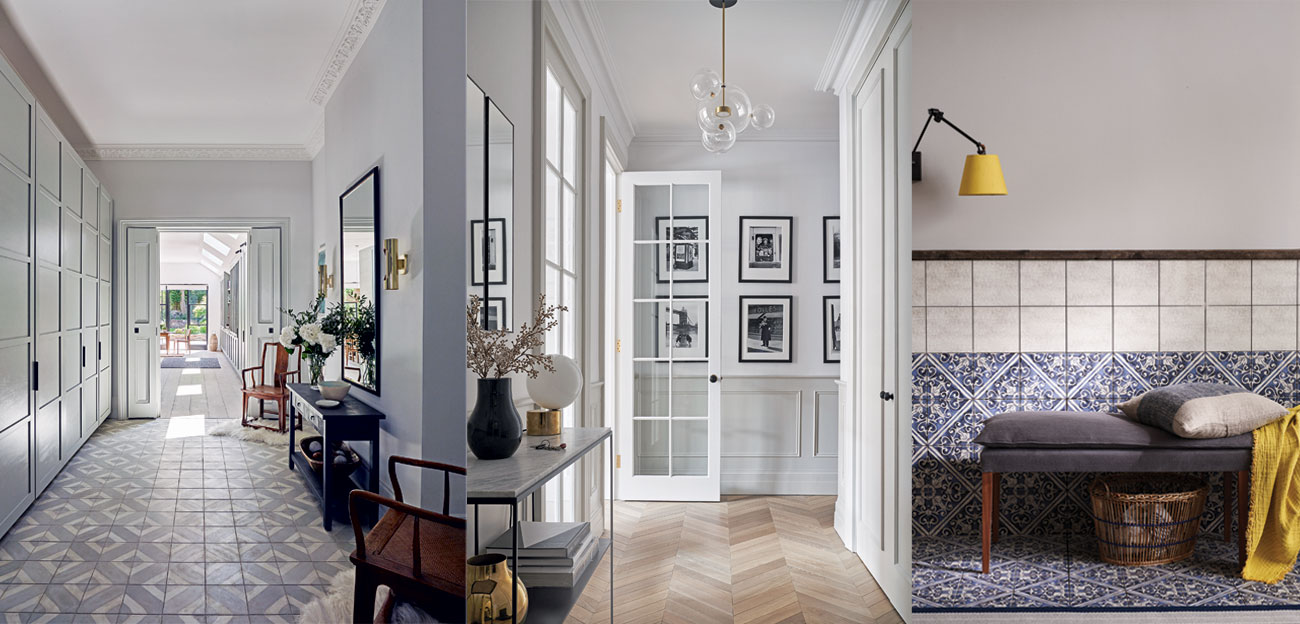

If you are on the hunt for modern hallway flooring ideas, then you've landed on the right page. Once an afterthought in a scheme, flooring has taken up a leading role.
We look back through the Homes & Gardens archives – and ask the interior design experts for the latest advice when it comes to hallway flooring ideas with a contemporary twist.
There’s a lot of interest in modern hallway flooring and in surface design in general, believes Mark Findlay, founder of vinyl flooring specialists Harvey Maria. ‘Entryway floors are no longer an after-thought; they’ve become an integral part of interior design and are now seen as a key feature in the home,’ he says.
Modern hallway flooring ideas
While a modern hallway floor, with its heavy use, needs to be durable and preferably easy to maintain, it can also be a feature that enhances the style and success of your room. The choice of material depends on your budget and attitude towards character, beauty and practicality.
1. Wow with wood
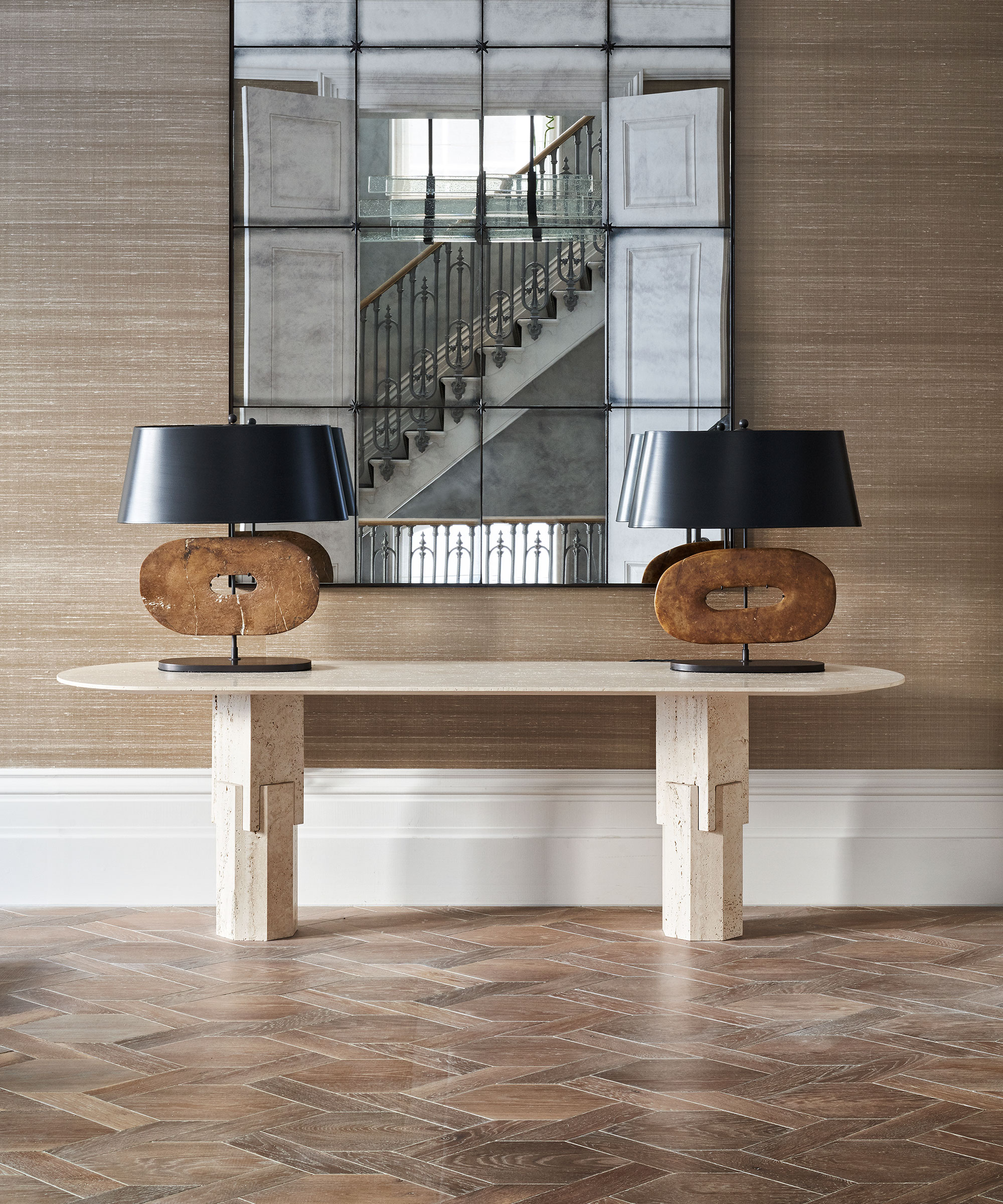
Wood remains an enduring choice for interiors and is the ideal modern flooring to bring warmth and character to the entrance of your home.
Parquet floors – now considered a design classic – are always a sign of quality and craftsmanship and this elegant and timeless form of flooring first made an appearance in Louis XIV’s Versailles. With regular correct maintenance, it’s a modern hallway flooring idea that will last for years.
2. Fake it with good-quality vinyl flooring
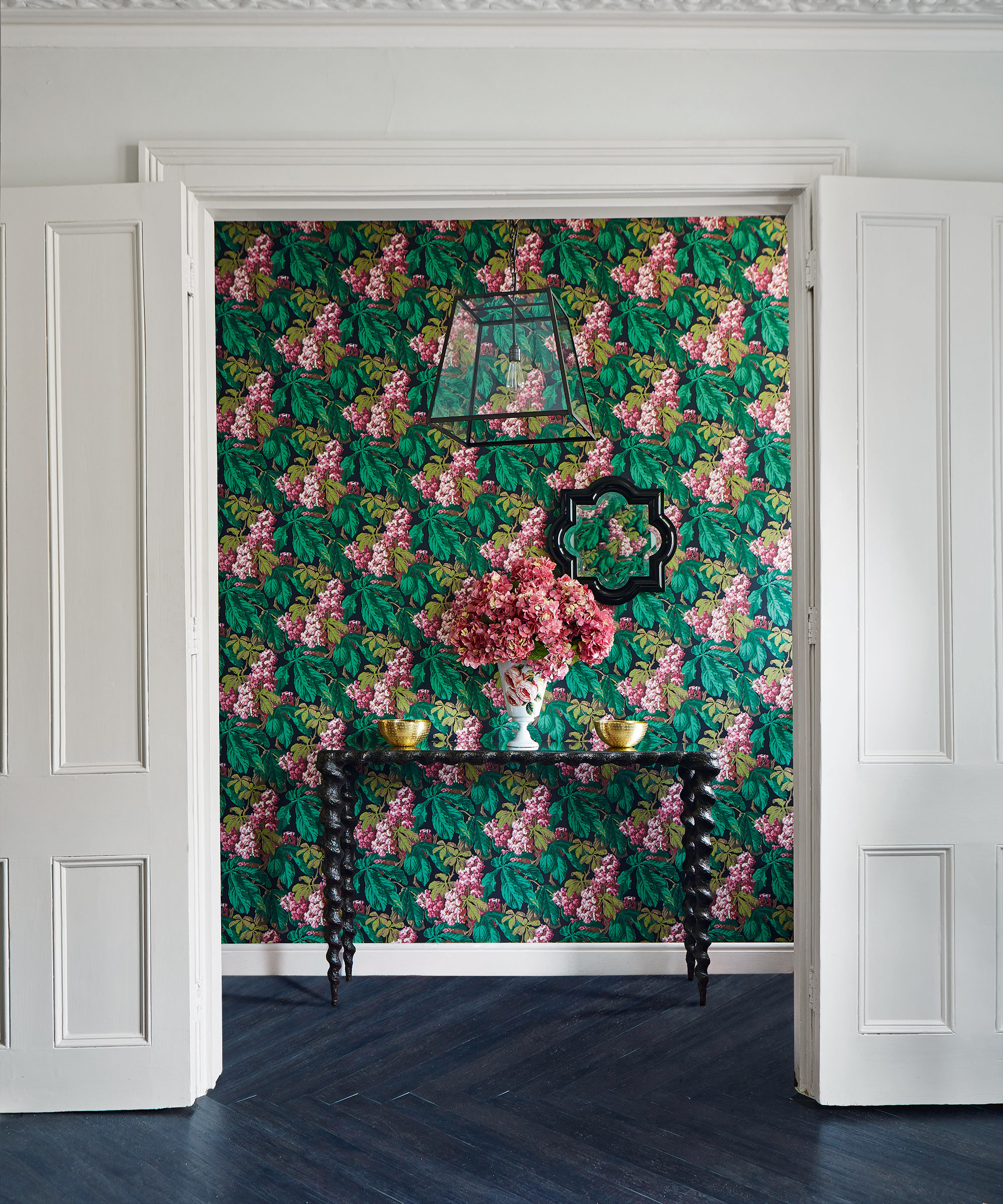
Warm underfoot, easy to install and even easier to maintain, the appetite for vinyl flooring in heavy-traffic areas such as halls and entryways is growing.
Your space may double up as a waiting area or a place to store shoes and coats, which means it should stand up to wear and tear. Opting for vinyl flooring is not only an affordable option, but a practical one, too. Luxury vinyl tiling (LVT) is also resistant to chemical stains and water, so can be cleaned easily. Choose from finishes that mimic wood and stone or playful patterns that add a splash of decoration while disguising pesky footprints. Look out for vinyl floor tiles, as opposed to rolls which are prone to warping.
3. Play with pattern
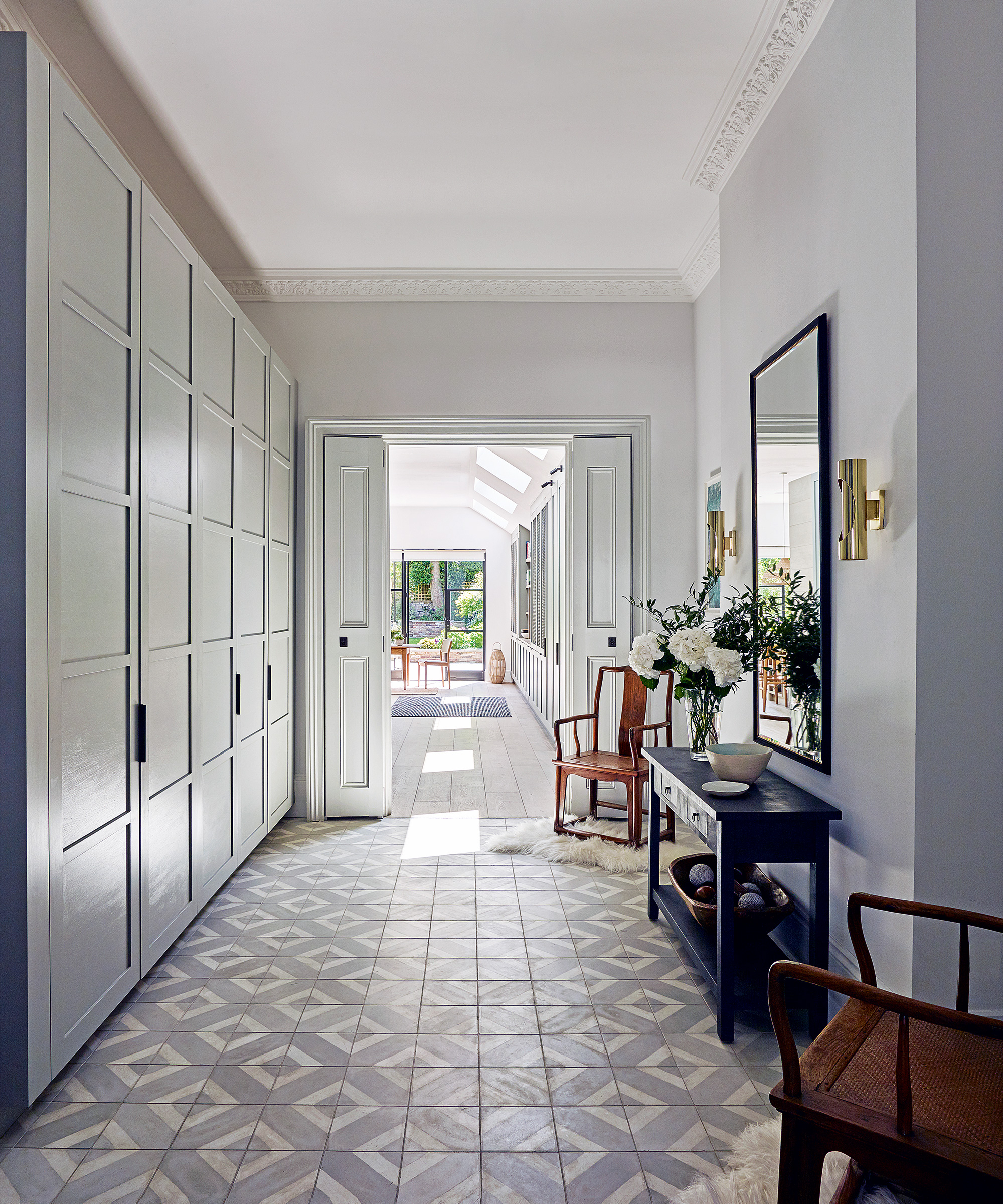
‘Choosing the right type of modern flooring, in terms of the pattern it creates, can go a long way to making a hall space appear larger,' says Irene Gunter, interior designer and founder, Gunter & Co.
'I like to use wood on a diagonal – the room will seem bigger than it is. When it comes to tiling, I prefer tiles where you don’t obviously see where one tile starts or stops, making the entire floor appear seamless. Mosaics, large marble slabs or quirky geometric shapes can all be used to achieve this – especially when using bright colors like a powder blue. Whatever you do, try to avoid standard 60x60cm tiles as they visually divide the room into squares, accentuate that not too many of them fit.’
Harriet Goodacre of Topps Tiles agrees: ‘We often associate patterned flooring with Victorian-era design and for good reason; they are famed for their use of refined yet intricate patterns in the home to bring an air of timeless luxury.’
4. Lay down a patterned carpet
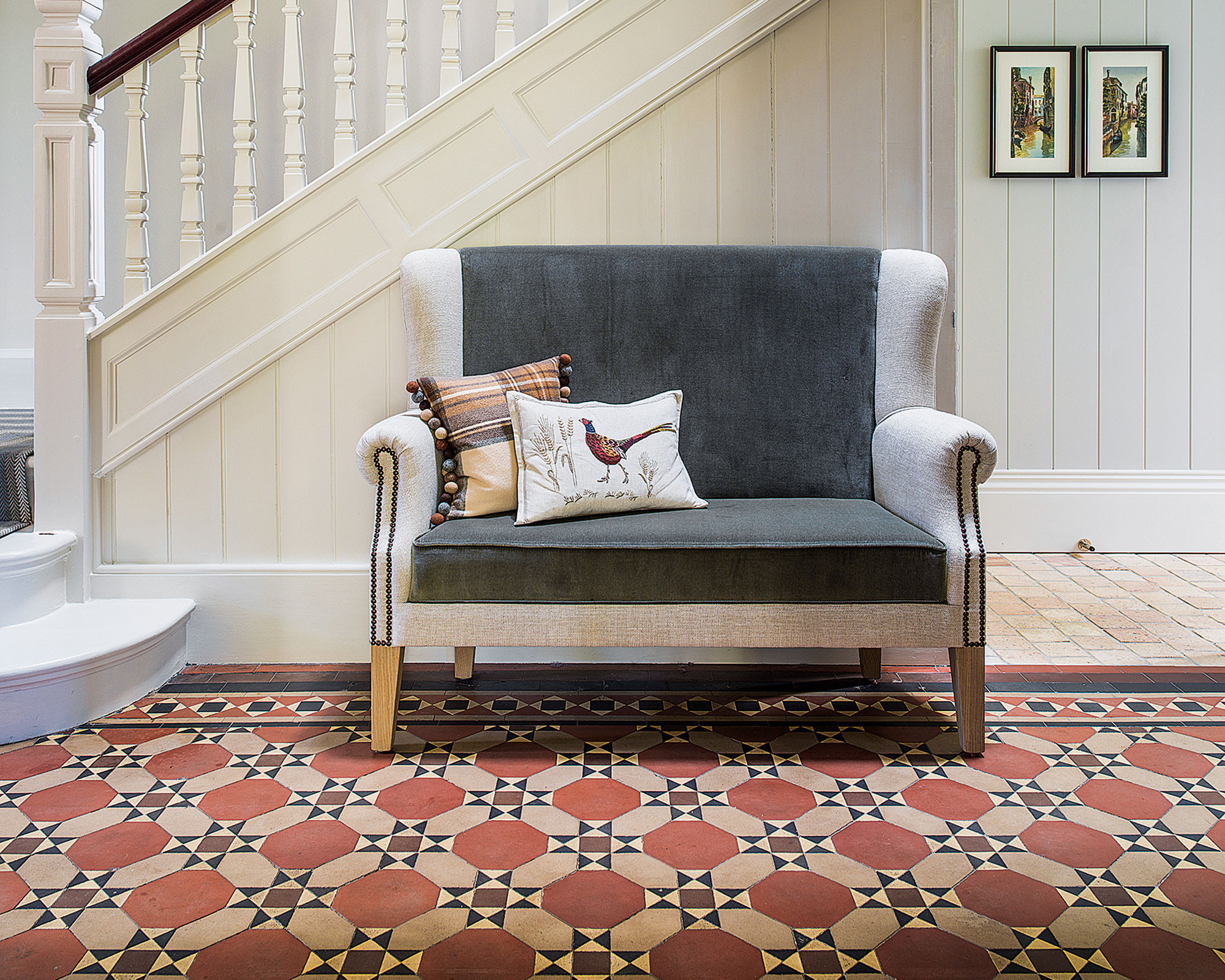
Until recently, carpet and rugs tended to be plain, neutral and for the bedroom only, but patterned carpets, rugs and hallway runner ideas are now coming back into favor, and moving into the hallway, too.
In the right hands, hallway carpet ideas and designs are akin to introducing a work of art into a room and setting a strong design tone. Think of the floor as the room’s main canvas, says Lorna Haigh of Alternative Flooring.
Lisa Conway of Brintons agrees: ‘We believe that a design scheme should start from the floor up, with the carpet being the basis for all the design choices,’ she says. ‘Pattern and color have been brought to the forefront to create a statement.’ A heavily patterned design is a bold decision, but if you love it, go for it, recommends Lisa. ‘It will withstand room renovations for years to come because you can pick out different colors and design details to carry through to the wider scheme.’
5. Pave the way with realistic wood-effect tiles

Timber-effect plank-shaped porcelain tiles are a popular choice for the hallway, not least because they introduce a sense of character and movement. Previously, their totally flat printed surface used to give away the fact that the planks were not made of real wood, but these days, a woodgrain is pressed into the surface of the tile for extra realism.
6. Lay down classic limestone
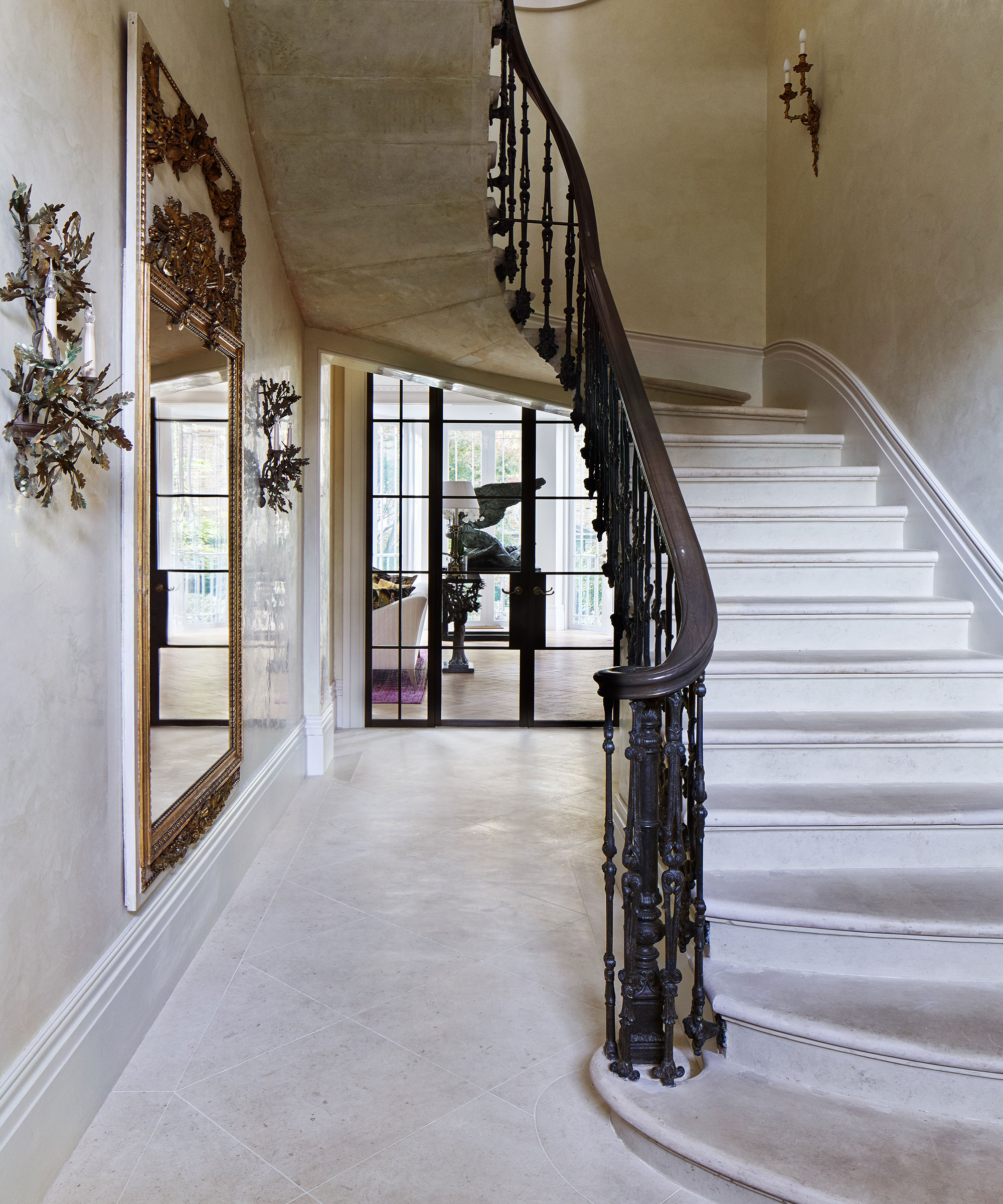
As one of the most popular choices of stone flooring, limestone comes in many variations of color, cuts and finishes. It works well both indoors and outdoors, making it a great option for entranceways and open-plan spaces. Limestone tends to come in lighter, honey tones – and while it is not as porous as the likes of sandstone, it will require a strong sealant and will need to be maintained regularly to avoid premature staining and scratches.
7. Evoke a modern farmhouse feel with sandstone
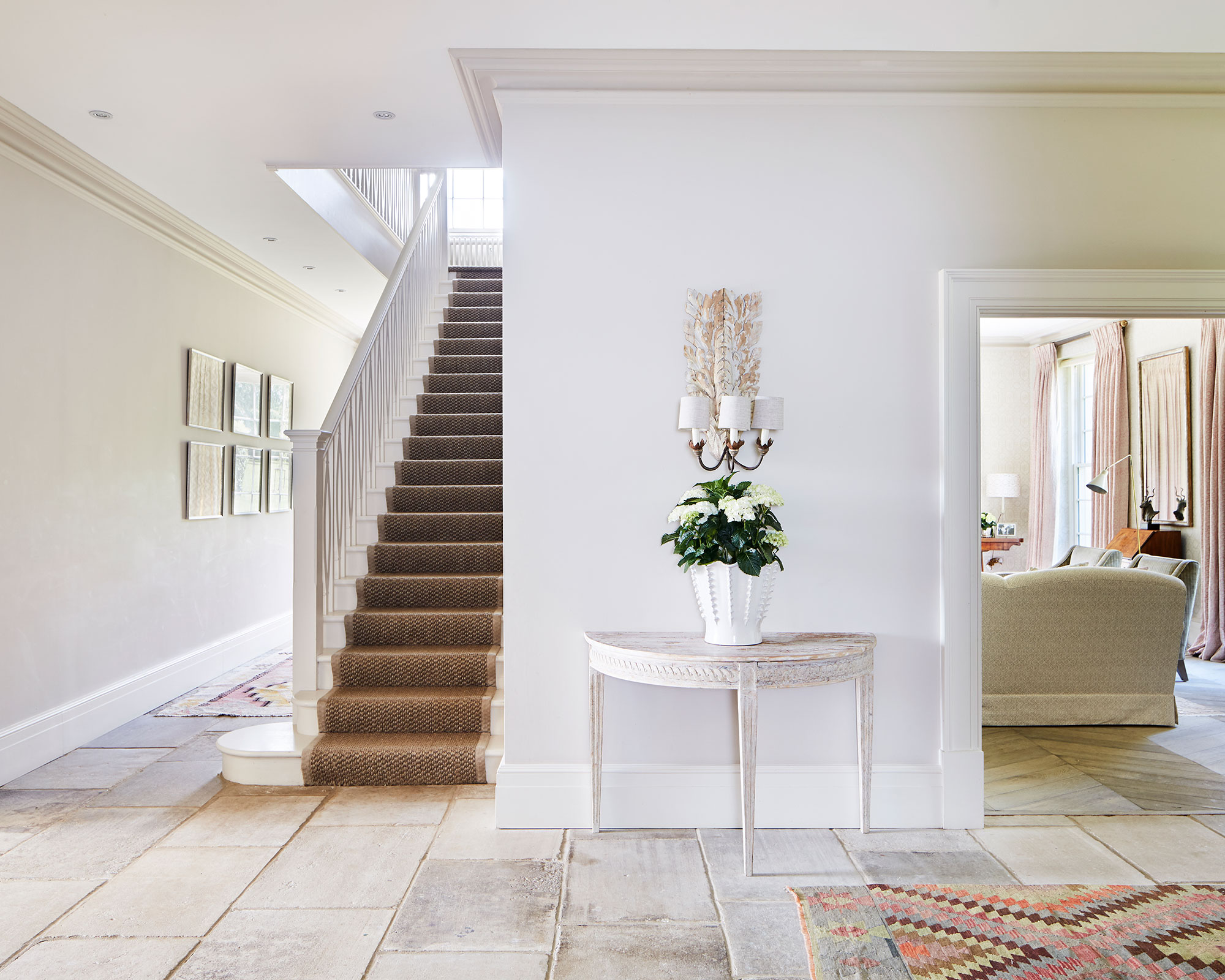
Naturally beautiful, each slab of sandstone comes in varying hues. It will weather with age, which is part of its charm, but will require sealing. ‘All natural stone is porous, so it needs to be sealed,’ says Jason Cherrington, director of Lapicida. ‘Fortunately, high-tech sealants offer as much as 15 years’ guarantee.’
John Forde of Beswick Stone advises: ‘Employ someone who will not be fazed by the installation challenges that a natural material has over a man-made tile. This is by far the biggest mistake people make when getting a stone floor.’
8. Pretty up with porcelain tiles
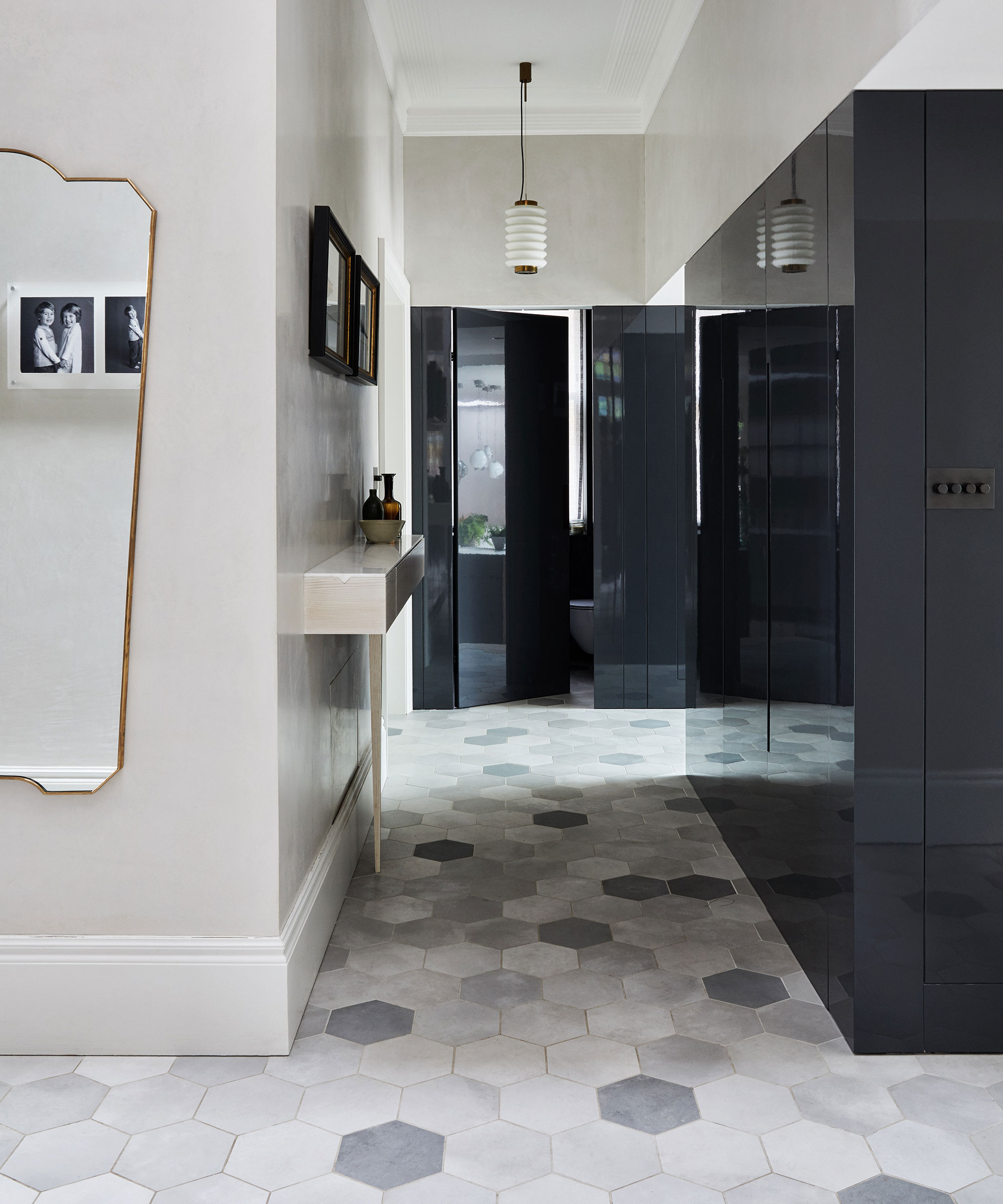
There are many benefits to using porcelain tiles, as Jo Oliver, director of The Stone & Ceramic Warehouse, explains: ‘Porcelain is easy to keep hygienically clean. A non-porous material, it is hardwearing, lightweight, scratch and stain-proof,’ says Jo.
Opting for large-format slabs with fewer grout lines not only helps with cleaning stone floors, but can create the illusion of space in a small hallway or narrow hallway space. Just be sure to choose a non-slip finish.
9. Go for modern encaustic-look tiles
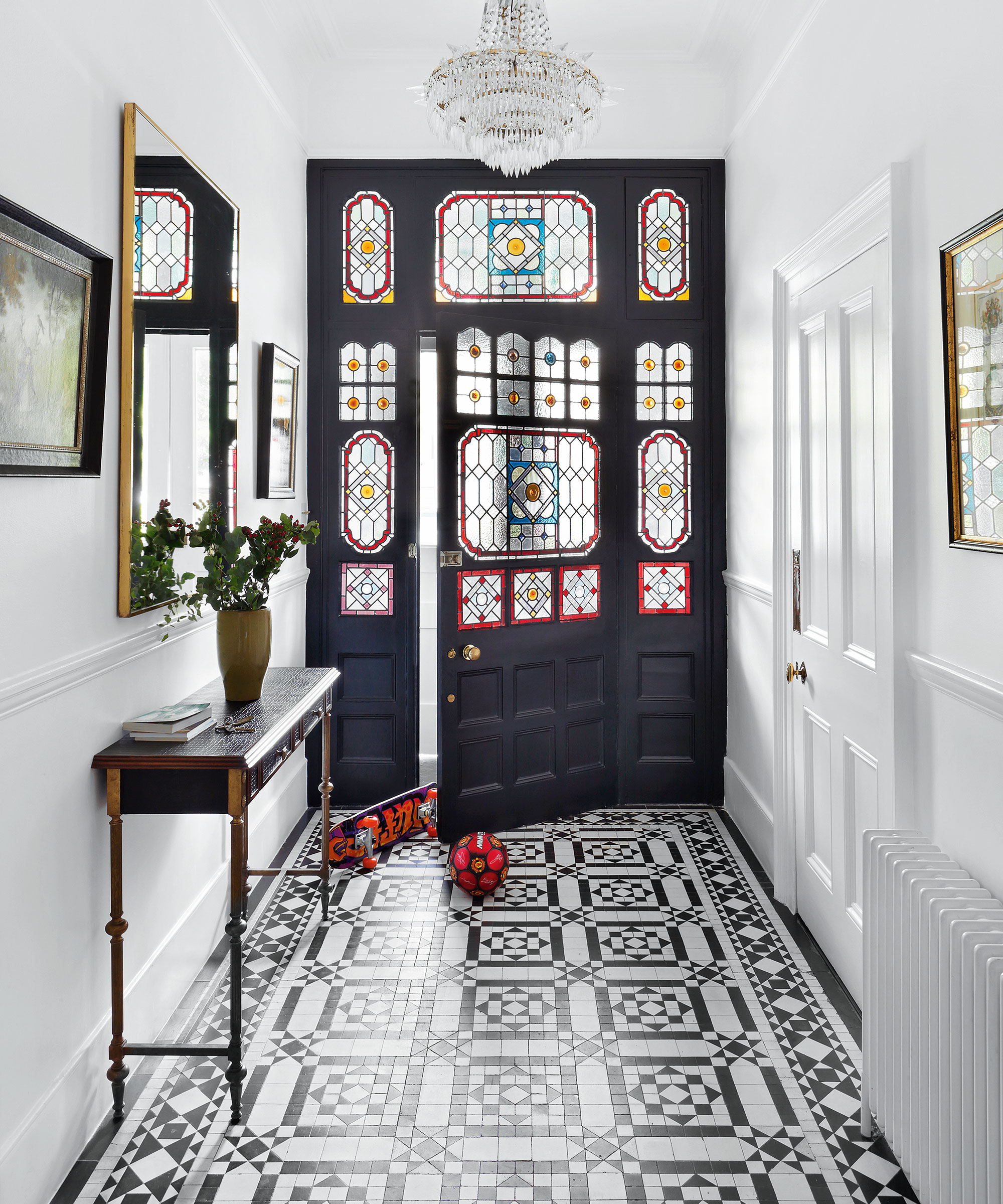
If you want to replicate the authentic colors and pattern of encaustic (concrete) tiles without any maintenance, consider an encaustic-look porcelain. Or create a bespoke hallway floor by combining shapes: it is amazing how many different designs you can create with a triangular format in a range of colors.
By far the most popular material for modern hallway floors these days, porcelain tiles are robust, non-porous and highly stain and scratch resistant. They work well with underfloor heating, plus they tend to come in a huge variety of designs, colors and formats.
10. Opt for polished concrete
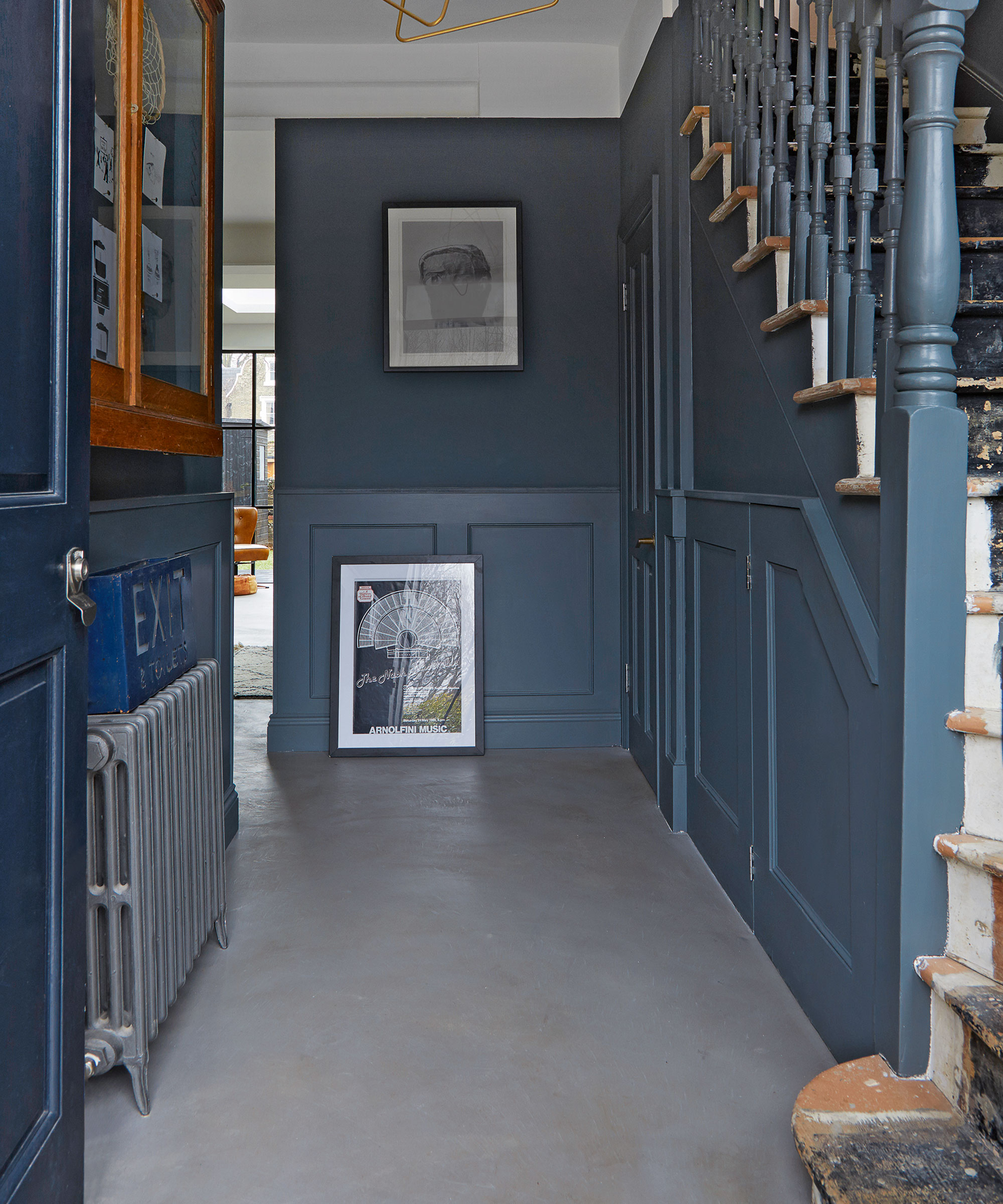
While polished concrete requires specialist installation, it can last a lifetime and requires minimal maintenance. It is wise to install a heating system as your concrete flooring goes in, otherwise it can feel quite cold underfoot – and retro-fitting can be a costly and disruptive task.
You may also want to add a large cozy rug or runner to soften up the space and help absorb sound, preventing unwanted echoing throughout your property.
What is the best flooring for a hallway?
A low-maintenance, durable floor is key for a modern hallway. Natural stone retains heat in the winter and is cool in summer. Wood-effect ceramic floors give the beauty of timber but are more practical and hard-wearing.
As to whether you continue the hallway flooring into the adjacent rooms, this is dependent on whether you are looking to unify the space or create a statement room in its own right. Patterned floors can delineate the space and provide wow factor when glimpsed through a glass or open door.
Patterned floors work well in smaller spaces such as hallways, staircases and landings. Where a busy pattern on a wall might be overwhelming, introducing a pattern on the floor with a mosaic or encaustic tile can add interest without taking over the space. ‘We often use boldly patterned or brightly colored carpets in small rooms or forgotten back stairs – they liven themselves up when you introduce something unexpected and strong,’ says interior designer Adam Bray.
“Patterned floors, especially tiles, are forgiving and practical but they can also visually link spaces, creating a continuous vista between the interior and exterior,' says Sophie Coller, managing director, Kitesgrove.
What should I put on my hallway floor?
A hall is an introduction. The exterior and front door have already given plenty of clues – the sort you pick up when you see someone you haven’t met before across a room – but entering the hall is the beginning of a conversation. Will it be tidy, empty, plain? Will it be colorful and crowded? As the first space you experience, it creates a lasting impression. But a hall has an equally important practical role, as the stepping stone between indoors and outdoors, the passage between rooms and, more often than not, the link between downstairs and upstairs.
Even in houses with boot rooms, the hall is a well-worn path, and because of this its flooring should be hardwearing. This is not a place for thick-pile carpet, valuable rugs or anything that stains or weathers unattractively. Any of the traditional floorings used in period homes fit the bill. Floorboards, farmhouse flags or tessellated encaustic tiles all look better for the polish endowed by generations of boot soles. If you are not fortunate enough to have original flooring, a good alternative is reclaimed versions, whether wood, stone or ceramic.
Sign up to the Homes & Gardens newsletter
Design expertise in your inbox – from inspiring decorating ideas and beautiful celebrity homes to practical gardening advice and shopping round-ups.

Jennifer is the Digital Editor at Homes & Gardens. Having worked in the interiors industry for several years in both the US and UK, spanning many publications, she now hones her digital prowess on the 'best interiors website' in the world. Multi-skilled, Jennifer has worked in PR and marketing and occasionally dabbles in the social media, commercial, and the e-commerce space. Over the years, she has written about every area of the home, from compiling houses designed by some of the best interior designers in the world to sourcing celebrity homes, reviewing appliances, and even writing a few news stories or two.
-
 Barbra Streisand spotted a 'little miracle' on her garden's rose bush – landscaping experts say you can grow her 'joyful' flowers on a smaller scale
Barbra Streisand spotted a 'little miracle' on her garden's rose bush – landscaping experts say you can grow her 'joyful' flowers on a smaller scaleThe singer's rose bushes are among the most abundant and beautiful we've seen this year – with the right advice, you can follow her example
By Megan Slack
-
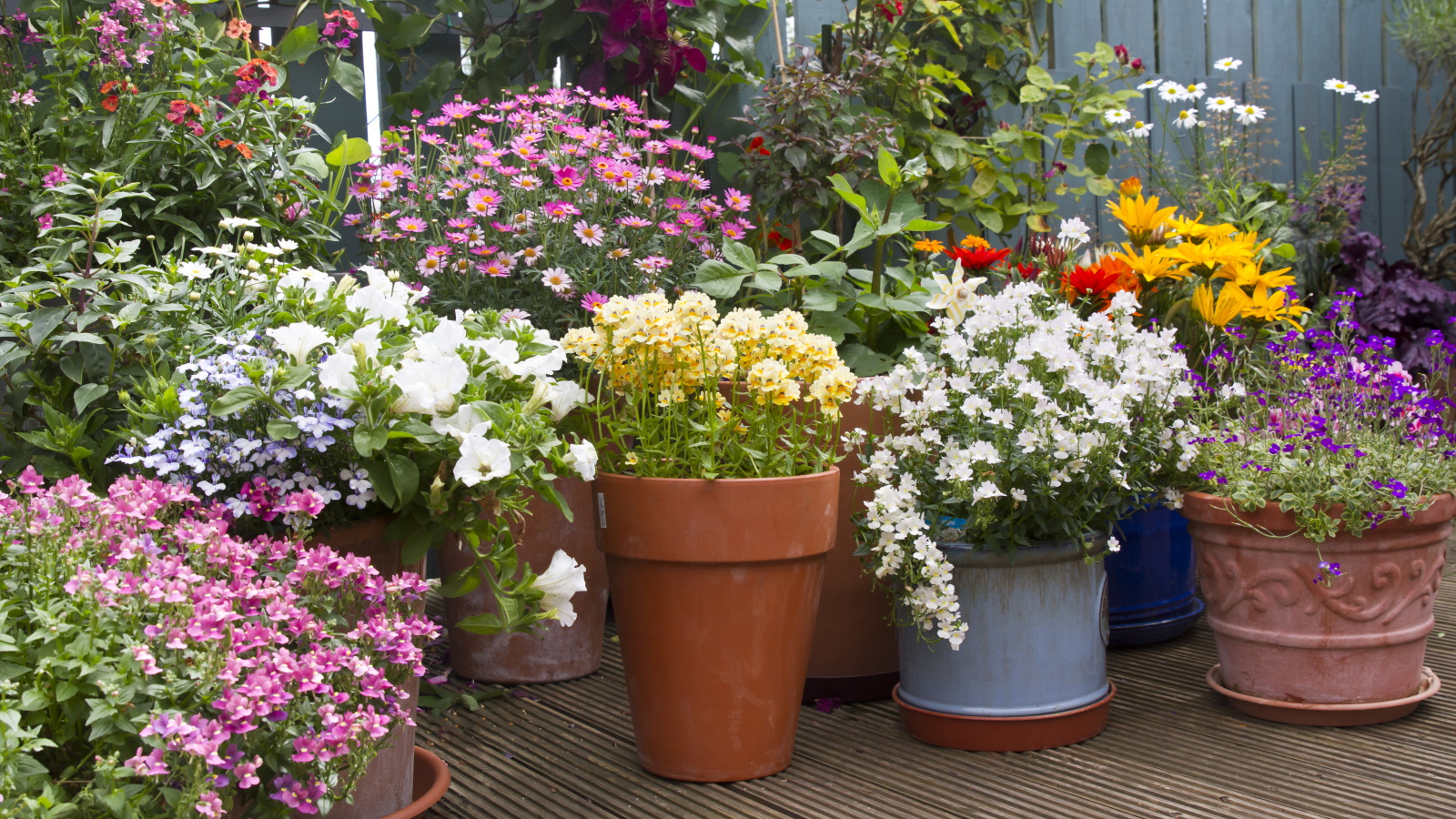 ALDI just restocked their smart-looking $4.99 self-watering planters for small container gardens, and it's the ideal solution for plant serial killers
ALDI just restocked their smart-looking $4.99 self-watering planters for small container gardens, and it's the ideal solution for plant serial killersThese highly-rated planters are perfect if you are time-poor, a novice gardener, or a frequent short-haul traveler
By Jennifer Ebert